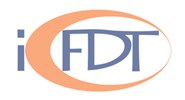Speaker
Dr
Luisa Caneve
(ENEA)
Description
The application of laser-based techniques as analytical tools in materials science is widespread and very promising by now, also due to the continuous development of the laser technology.
In particular, the Laser Induced Fluorescence (LIF) technique is a molecular spectroscopy based on the interaction of the ultraviolet radiation emitted by a laser with the matter. This technique, for a surface analysis, is fast, remote, non invasive and specific.
Scanning hyperspectral systems based on LIF have been developed and realized in the Diagnostic and Metrology laboratory of ENEA Frascati allowing to obtain information of analytical and qualitative interest on different materials by the study of the laser induced fluorescence.
A new compact set up will be presented. It has been recently built with the aim to increase the performances in terms of space resolution, time resolved capabilities and data acquisition speed. Major achievements have been reached by a critical review of the optical design. With these upgrades, an image of 1.5×5 m2 is now scanned in less than 2 minutes.
The results recently obtained during laboratory and in-situ measurements of interest for applications in the field of Cultural heritage will be shown.

